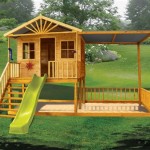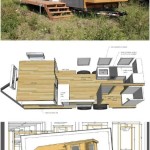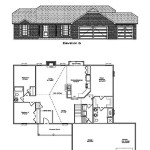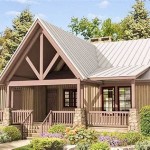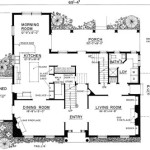Exploring the Allure of Spanish Floor Plans With Courtyard
Spanish-style architecture, renowned for its historical elegance and practical design elements, continues to captivate homeowners and architects alike. Among the distinguishing characteristics of this architectural style, the inclusion of a courtyard stands out as a defining feature. Spanish floor plans with courtyard offer a unique blend of indoor and outdoor living, creating tranquil retreats and enhancing the overall aesthetic appeal of the home. This article delves into the various aspects of Spanish floor plans incorporating courtyards, exploring their design principles, benefits, and practical considerations.
The roots of Spanish-style architecture can be traced back to the Iberian Peninsula, where influences from Moorish, Roman, and Mediterranean traditions converged. These historical influences are evident in the design elements commonly found in Spanish homes, such as stucco walls, red tile roofs, archways, and wrought iron detailing. The courtyard, also known as a patio, emerged as a central feature, serving both functional and aesthetic purposes. It provided a private outdoor space for families to relax, entertain, and enjoy the natural environment while simultaneously creating a visual focal point within the home's layout.
Spanish floor plans with courtyards are not simply about incorporating an outdoor space; they represent a holistic approach to design that prioritizes natural light, ventilation, and a seamless connection between the interior and exterior. The courtyard acts as a conduit, drawing sunlight into the surrounding rooms and facilitating cross-ventilation, which is particularly beneficial in warm climates. The strategic placement of windows and doors around the courtyard ensures that natural light permeates the living spaces, reducing the need for artificial lighting and creating a brighter, more cheerful atmosphere.
Key Design Elements of Spanish Floor Plans with Courtyard
Understanding the core design elements is crucial for appreciating the functionality and appeal of Spanish floor plans with courtyard. These elements often work in synergy to create a cohesive and harmonious living environment.
The Courtyard as a Central Hub: In many Spanish floor plans, the courtyard is positioned at the heart of the home, becoming the central point around which the living spaces are organized. This configuration allows for direct access to the courtyard from multiple rooms, blurring the lines between the indoors and outdoors. The courtyard can serve as an extension of the living room, dining room, or bedrooms, providing a versatile space for relaxation, entertainment, or simply enjoying the fresh air. The size and shape of the courtyard can vary depending on the overall design of the home, ranging from small, intimate patios to expansive, multi-functional spaces.
Architectural Symmetry and Balance: Spanish-style architecture often emphasizes symmetry and balance in its design. This principle extends to the layout of the courtyard and the surrounding rooms. The placement of windows, doors, and other architectural features is carefully considered to create a visually pleasing and harmonious composition. Symmetrical arrangements can enhance the sense of order and tranquility, while asymmetrical designs can add a touch of uniqueness and individuality. Regardless of the specific approach, the goal is to create a cohesive and balanced design that complements the overall aesthetic of the home.
Use of Natural Materials: The incorporation of natural materials is another hallmark of Spanish floor plans with courtyard. Stucco walls, clay tile roofs, and stone accents are commonly used to evoke a sense of authenticity and connection to the natural environment. These materials are not only aesthetically pleasing but also durable and practical, offering excellent insulation and resistance to the elements. Wood beams, wrought iron railings, and terracotta flooring further enhance the textural richness and visual interest of the design. The choice of materials plays a crucial role in defining the character and ambiance of the home.
Water Features and Landscaping: Water features, such as fountains or small pools, are often incorporated into Spanish courtyards to create a soothing and tranquil atmosphere. The sound of flowing water can mask ambient noise and promote relaxation. Landscaping also plays a crucial role in enhancing the beauty and functionality of the courtyard. Native plants, such as olive trees, citrus trees, and flowering shrubs, are commonly used to create a lush and vibrant outdoor space. The careful selection and arrangement of plants can provide shade, privacy, and visual interest throughout the year.
Benefits of Integrating a Courtyard into a Spanish Floor Plan
The integration of a courtyard into a Spanish floor plan offers numerous benefits, enhancing both the aesthetic appeal and the functional aspects of the home.
Enhanced Privacy and Security: One of the primary advantages of a courtyard is the enhanced privacy and security it provides. Enclosed by walls or the house itself, the courtyard creates a secluded outdoor space that is shielded from public view. This allows homeowners to enjoy outdoor activities without sacrificing their privacy. The courtyard can also serve as a secure play area for children or a safe haven for pets. The sense of enclosure and protection contributes to a feeling of tranquility and relaxation.
Improved Natural Lighting and Ventilation: Courtyards can significantly improve natural lighting and ventilation within a home. The open design of the courtyard allows sunlight to penetrate deep into the interior spaces, reducing the need for artificial lighting during the day. The strategic placement of windows and doors around the courtyard facilitates cross-ventilation, allowing fresh air to circulate freely throughout the home. This natural ventilation can help to regulate indoor temperatures, reducing reliance on air conditioning and contributing to energy efficiency. The resulting effect is a brighter, more comfortable, and healthier living environment.
Seamless Indoor-Outdoor Living: Spanish floor plans with courtyard are designed to promote a seamless transition between indoor and outdoor living. The courtyard serves as an extension of the interior spaces, blurring the lines between the inside and outside. Large doors or archways can be used to connect the living room, dining room, or bedrooms directly to the courtyard, creating a fluid and integrated living space. This seamless connection allows homeowners to enjoy the beauty of the outdoors while remaining within the comfort of their home. The courtyard can be used for a variety of activities, such as dining, entertaining, or simply relaxing in the fresh air.
Aesthetic Appeal and Increased Property Value: Beyond its functional benefits, a courtyard adds significant aesthetic appeal to a Spanish-style home. The courtyard can be designed as a focal point, showcasing architectural details, landscaping, and water features. The visual interest and unique character of the courtyard can enhance the overall beauty of the home and create a more inviting and welcoming atmosphere. Furthermore, the inclusion of a courtyard can increase the property value of the home, making it a desirable feature for potential buyers.
Practical Considerations for Designing a Spanish Courtyard
While the allure of a Spanish courtyard is undeniable, careful planning and consideration are essential to ensure its successful integration into the overall floor plan.
Climate and Orientation: The local climate and the orientation of the home play a crucial role in determining the optimal design and placement of the courtyard. In hot climates, it is important to consider shading strategies to minimize the amount of direct sunlight that enters the courtyard. This can be achieved through the use of trees, pergolas, or awnings. The orientation of the courtyard should also be considered to maximize natural ventilation and minimize exposure to harsh winds. In colder climates, it may be necessary to incorporate heating elements or windbreaks to make the courtyard usable year-round.
Size and Functionality: The size of the courtyard should be proportional to the overall size of the home and the intended use of the space. A small courtyard may be sufficient for a compact home, while a larger home may require a more expansive courtyard to accommodate various activities. The functionality of the courtyard should also be carefully considered. Will it be used primarily for relaxation, entertaining, or gardening? The design should be tailored to meet the specific needs and preferences of the homeowners. Furniture, lighting, and landscaping should be selected to complement the intended use of the space.
Material Selection and Maintenance: The choice of materials for the courtyard should be durable, weather-resistant, and aesthetically pleasing. Stucco, stone, and tile are common choices for paving and wall surfaces. Natural wood can be used for decking and pergolas. It is important to select materials that are easy to maintain and that will withstand the elements. Regular cleaning and maintenance are essential to keep the courtyard looking its best and to prevent damage from moisture, pests, or other environmental factors. Proper drainage is also crucial to prevent water from pooling in the courtyard.
Privacy and Security Measures: While courtyards inherently offer a degree of privacy, additional measures may be necessary to enhance security and prevent unwanted access. Tall walls, fences, or hedges can be used to create a physical barrier around the courtyard. Gates with locks can be installed to control access to the space. Security lighting can be used to illuminate the courtyard at night and deter intruders. Consideration should be given to the placement of windows and doors that overlook the courtyard to ensure that they provide adequate visibility without compromising privacy.
In conclusion, Spanish floor plans with courtyards offer a compelling combination of functionality, aesthetic appeal, and historical significance. By understanding the key design elements, benefits, and practical considerations discussed in this article, homeowners and architects can create beautiful and functional living spaces that capture the essence of Spanish-style architecture.

Plan 82009ka Spanish Colonial With Central Courtyard

46 Trendy House Plans With Courtyard Spanish Style Court Yard

Plan 46072hc 3 Bed Spanish Style House With Front Courtyard 2357 Sq Ft

Spanish House Plans Monster

Tuscan Style House Plan 4480 Villa Roberto

208150814000325060 Bungalow Courtyard Home Plan Hacienda Style Com

Plan Of A Spanish Courtyard House Italica Scientific Diagram

Marvelous Spanish Courtyard House Plans 9 Floor With Courtyards

Small Spanish Contemporary House Plan 61custom Modern Plans

Home Plan Casoria Tuscan House Plans Design Sater Collection

